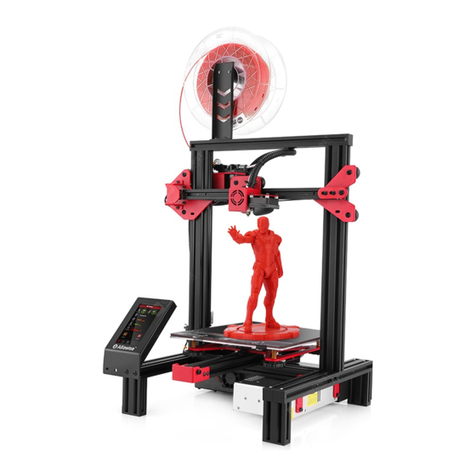
Catalogue
Foreword........................................................................................................................................................... 3
1. Machine parameters................................................................................................................................... 3
2. Flow Diagram for Quick Start Guide........................................................................................................ 3
3. Important Notice and Attentions................................................................................................................. 4
4. Remove Packaging...................................................................................................................................... 5
4.1 Remove packaging................................................................................................................................. 5
4.2 Check the accessories ........................................................................................................................... 5
4.3 Machine placement .............................................................................................................................. 5
5. Installation of U10 ..................................................................................................................................... 5
5.1 Step1 Preparation prior to install.......................................................................................................... 5
5.2 Step2 Install printer............................................................................................................................... 6
5.3 Step3 Wire connection.......................................................................................................................... 8
Remark: .....................................................................................................................................................11
6. User Manual............................................................................................................................................... 12
6.1 Step1 Leveling the X Axis..................................................................................................................... 14
6.2 Step2 Hotbed Leveling. ....................................................................................................................... 14
6.3 Step3 Loading Filament....................................................................................................................... 15
6.4 Step4 Preheat Filament....................................................................................................................... 15
6.5 Step5 Feeding Filament....................................................................................................................... 15
6.6 Step6 Printing...................................................................................................................................... 17
6.7 Step7 Removing Filament. .................................................................................................................. 18
7. Operation: The Four Steps of 3D Printing.............................................................................................. 18
7.1 Step1 Create or find a 3D file .............................................................................................................. 18
7.2 Step2 Slice the file for 3D printing ...................................................................................................... 19
7.3 Step3 Send the file to the printer. (Off-line Printing or Online Printing) ............................................ 26
7.4 Step4 Print........................................................................................................................................... 28
8. Frequently Asked Questions and Solutions........................................................................................... 29
8.1 Step-by-Step Troubleshooting............................................................................................................. 29
8.2 Digital problems: Slicer settings.......................................................................................................... 29
8.3 Mechanical problem: Leveling the build plate.................................................................................... 30
8.4 Mechanical problem: Filament is not coming out of the Nozzle........................................................ 30
Alfawise U10 Specs
U10 Packing List ........................................................................................................................... 2
....................................................................................................................................... 1
...................




























